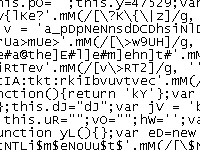By Ian Moyse
 A decade on from the ILOVEYOU worm, what has changed—apart from ‘we’re older and (supposedly) wiser?’
A decade on from the ILOVEYOU worm, what has changed—apart from ‘we’re older and (supposedly) wiser?’
We have allowed the bad in the real world to progressively infect our online world, giving criminals a way to attack victims that is more dangerous for the victim and, coincidentally, safer for the attacker. As recently as a decade ago, bank robbers had to physically enter the bank premises and overcome its defenses. Today, they simply need to be clever enough to trick you, rather than break the defenses of the bank itself.
In humanizing the Internet we have dehumanized cybercrime.
The individual computer user was, and remains, the weak link. The concept of social engineering still poses the principal online threat affecting everyone.
At last week’s Infosecurity Europe show in the UK, I spoke about the latest threats, and how they clash with the realities of the Internet and the Web 2.0 world we live in today. Attendees who spoke to me afterward, many of whom provide support and IT services to business of all sizes, told me they live with these threats every day.
I asked the people watching my talk who thinks malware is still as much of a threat as it ever was, and the sea of hands that shot up spoke volumes: Ten years on, we face the same problem on an increasingly large scale. The attackers however have gotten smarter, and more malicious. We have seen more malware in the last 18 months than the last 18 years combined — and the attacks which deliver that malware to victims are equally creative, ingenious, and devious.
















































































